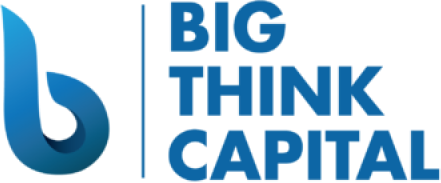Decoding the Federal Interest Rate Hike: What It Means for Your Small Business Funding and Steps to Secure Your Financial Future
Estimated reading time: 5 minutes
- Understanding how interest rate hikes affect small business loans.
- Strategies to navigate increased borrowing costs and tightened lending standards.
- Actionable steps for securing your financial future amidst economic uncertainty.
Table of Contents
- Understanding the Federal Interest Rate Hike
- How Interest Rate Changes Affect Small Business Funding
- Practical Takeaways for Business Owners
- Steps to Secure Your Financial Future
- Conclusion
- FAQ
Understanding the Federal Interest Rate Hike
The Federal Reserve plays a pivotal role in the economy by adjusting interest rates to manage inflation and stabilize the currency. When the economy shows signs of overheating, such as increased consumer spending or rising prices, the Fed raises interest rates to cool off demand. Conversely, when the economy slows down, it may lower rates to stimulate growth.
Recent Trends in Interest Rates
Since late 2022, the Federal Reserve has implemented significant rate increases, aiming to combat inflation that heightened to over 9% in mid-2022 (U.S. Bureau of Labor Statistics). By mid-2025, rates may sit around 5.5% to 6% depending on economic conditions. For many small businesses, this environment can lead to increased borrowing costs but also presents strategic opportunities for those ready to adapt.
What does this mean for your small business? Here are several key areas of impact.
How Interest Rate Changes Affect Small Business Funding
Increased Borrowing Costs
When the Fed raises interest rates, the cost of borrowing increases. This affects various lending products, including:
- SBA Loans: Although these government-backed loans traditionally have lower rates, they are still influenced by the prime rate, which may rise as the Fed increases rates.
- Equipment Financing: Businesses may face higher monthly payments for financing equipment purchases as rates climb.
- Merchant Cash Advances: While often more expensive, these products will also see increased costs reflecting the higher risk to lenders.
Impact on Cash Flow
With heightened borrowing costs, cash flow can become strained. Increased payment obligations may limit funds available for operational expenses, such as payroll, inventory, or marketing efforts. Business owners need to develop strategies to manage cash flow effectively during these times.
Tightened Lending Standards
Lenders react to economic uncertainty by tightening their lending criteria. This means small business owners may face more rigorous scrutiny regarding creditworthiness, revenue figures, and business plans.
Practical Takeaways for Business Owners
Understanding the implications of interest rate hikes is essential for strategically positioning your business. Here are three practical insights to navigate this evolving landscape.
1. Reevaluate Your Financial Strategy
With the cost of capital likely increasing, now is a great time to revisit your business’s financial strategy. Assess:
- Current Debt Levels: Identify whether refinancing existing obligations at lower rates is possible before further increases occur.
- Budgeting Practices: Review your budget to allocate funds more effectively, ensuring key operational areas remain well-funded.
2. Build Relationships with Lenders
As lending standards tighten, having strong relationships with lenders can make a considerable difference. Engage proactively with your banking institution or alternative financial partners to:
- Communicate Business Needs: Keeping lenders informed about your financial health provides context that may lead to more favorable terms when seeking financing.
- Explore Options: Discuss the best lending products for your business situation, as certain lenders may have tailored offerings that align with your growth plans.
3. Prepare for Future Financing Needs
Navigating higher interest rates means preparing for future financing needs today. Implement strategies to build a strong foundation for any loans or credit applications you may need to submit:
- Documentation: Keep meticulous records of your financial statements, tax returns, and business plans to present to lenders when seeking funding.
- Credit Score Improvement: Ensure your credit score is in good standing, as this will be a critical factor in securing favorable lending terms. Strategies like paying down debts and correcting any inaccuracies on your credit report can be beneficial.
Steps to Secure Your Financial Future
Navigating the intricacies of a fluctuating interest rate environment requires both preparation and agility. Here are actionable steps to help secure your small business’s financial future.
1. Diversify Funding Sources
Consider diversifying your funding sources to mitigate the risks associated with interest rate fluctuations. Some options include:
- Lines of Credit: These provide flexible access to funds that can be drawn as needed, which can help manage cash flow during high-cost borrowing periods.
- Alternative Lending: Explore options like working capital advances or equipment financing that may offer less restrictive terms than traditional lenders.
2. Leverage Government Programs
Take advantage of federal and state programs that may support small businesses, particularly in times of economic uncertainty. For instance, the SBA offers various loan products with competitive interest rates and favorable terms. Staying apprised of new initiatives launched can further benefit your business.
3. Monitor Economic Trends
Pay close attention to economic indicators and the Federal Reserve’s announcements. Keeping pace with these changes will help you:
- Adjust Strategies: Curate your business plans and financial strategies based on economic data.
- Predict Market Conditions: Enhanced awareness will enable you to prepare for any sudden economic shifts, ensuring your business is positioned to adapt.
Conclusion
The recent federal interest rate hike presents both challenges and opportunities for small business owners. By understanding the implications of these changes and strategically preparing for future financing needs, you can secure your business’s financial future.
At Big Think Capital, we understand the unique challenges that small businesses face in a fluctuating financial landscape. Our team of funding experts is here to help you navigate funding options tailored to your specific needs. Whether you are considering an SBA loan, equipment financing, or exploring alternative lending solutions, we are ready to assist you every step of the way.
To learn more about how we can help your business thrive, visit us at bigthinkcapital.com or contact our funding experts today. Your financial future is worth investing in.
FAQ
What should I do if my small business is facing increased interest rates?
It’s important to reassess your financial strategies, build relationships with lenders, and explore diverse funding options.
How can I improve my chances of securing a loan during high-interest periods?
Maintain a strong credit score, keep detailed financial documentation, and communicate openly with potential lenders about your business’s needs.
Are there any government programs that can help small businesses during this time?
Yes, the SBA and other federal and state agencies offer various loan products with favorable terms for small businesses.






